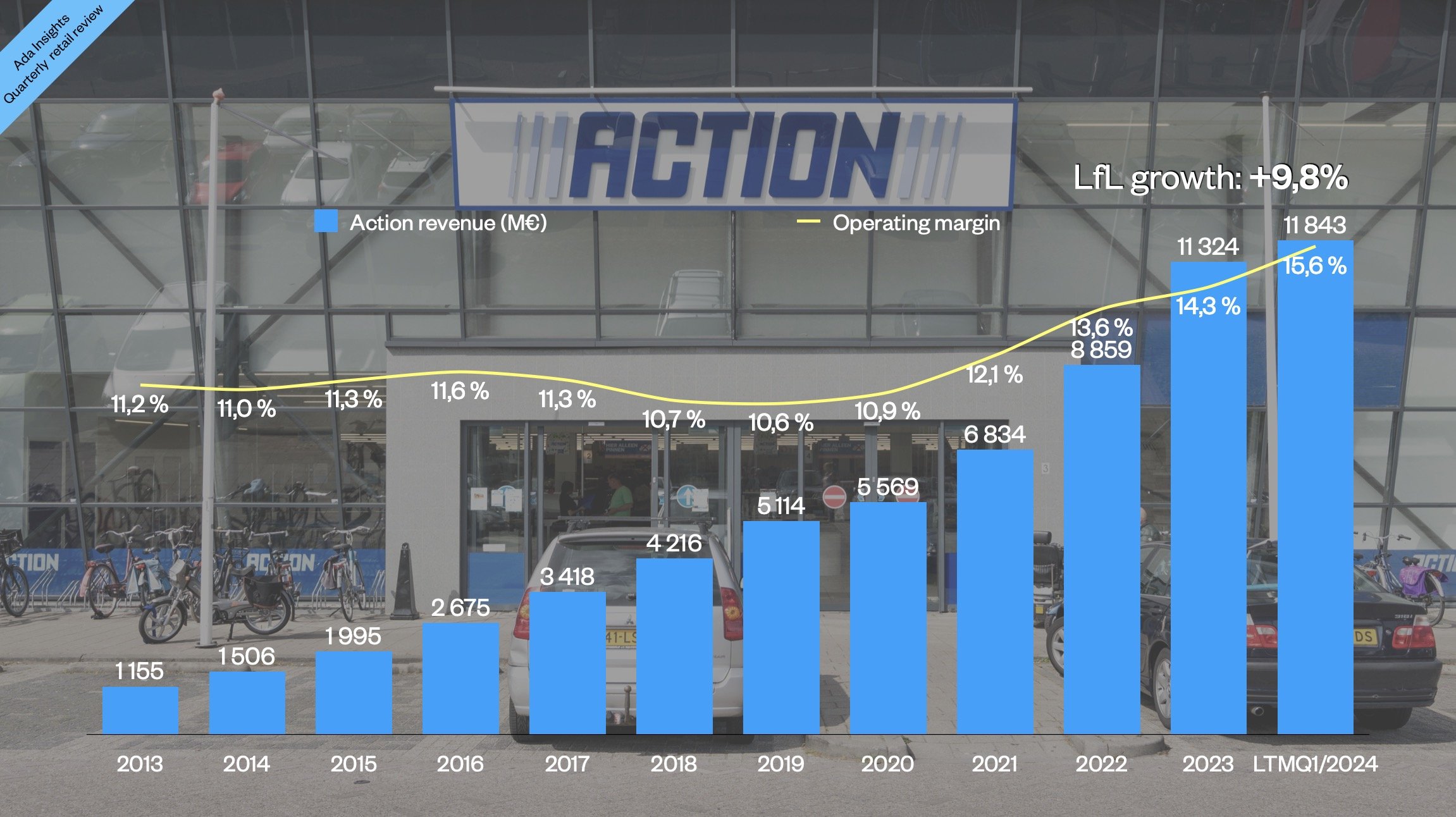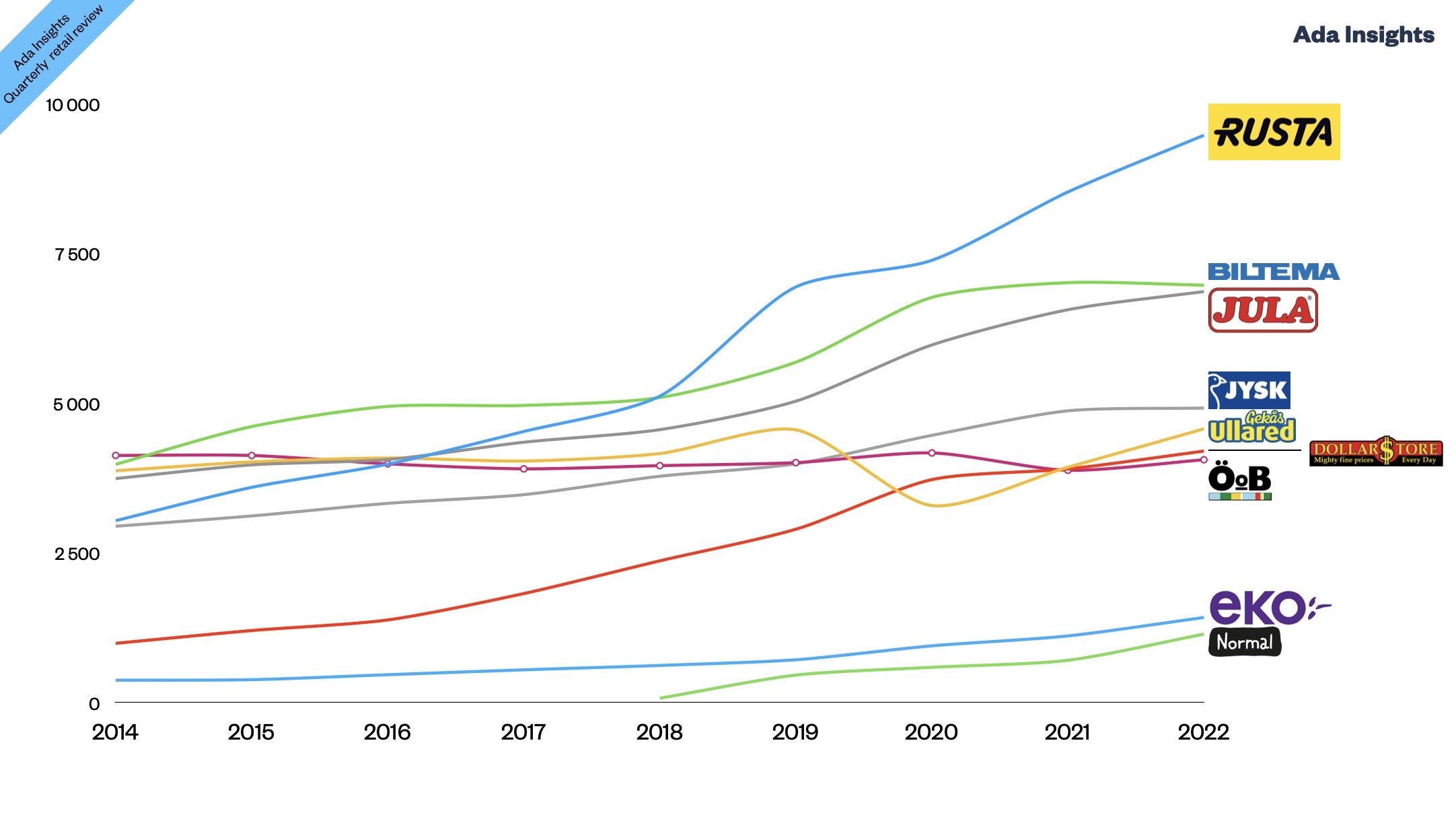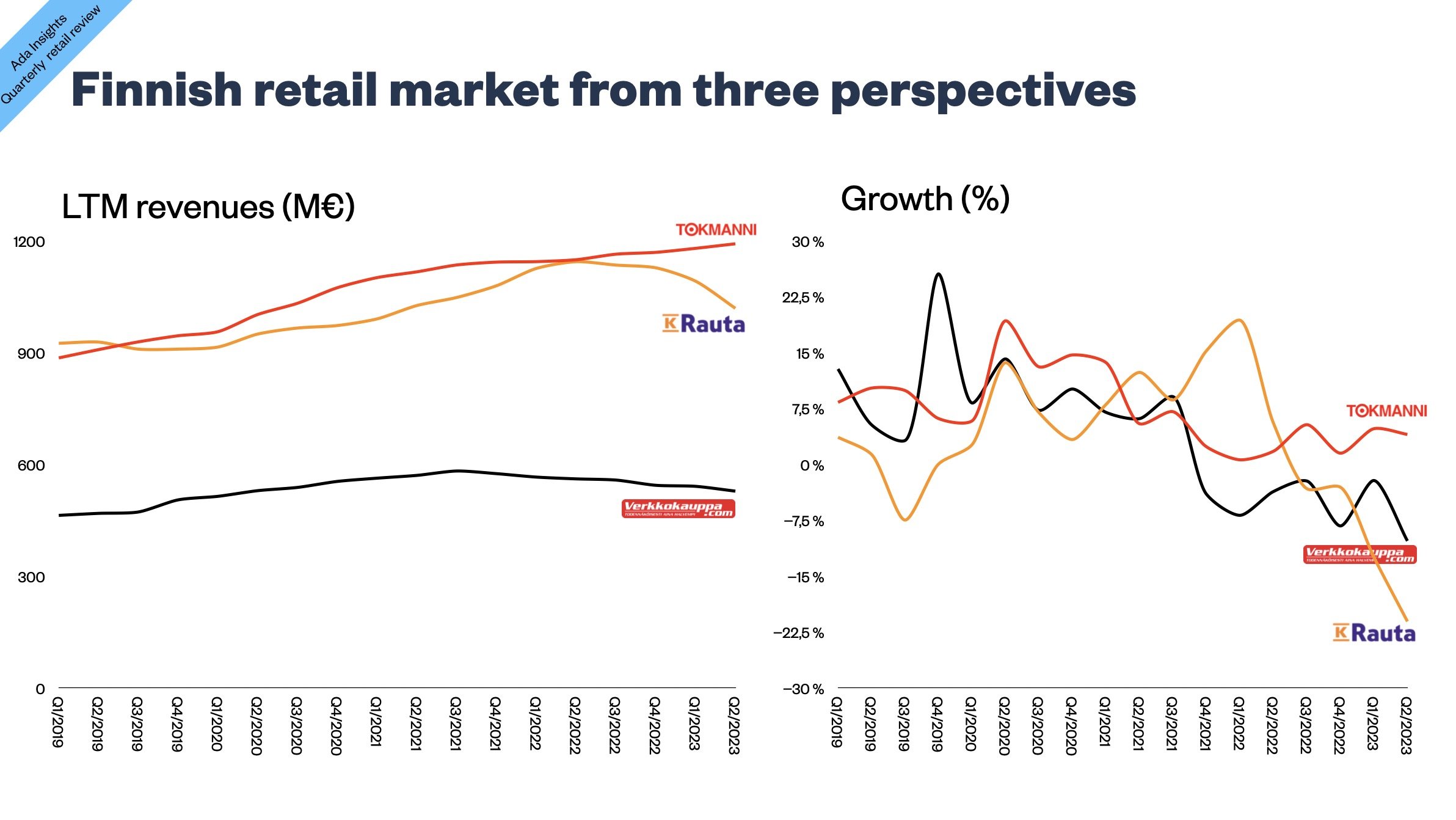Amazon’s service business continues to flourish amid overall slowing growth
Despite the economic environment becoming more challenging for retailers and many non-food retailers reporting sluggish numbers, Amazon continues to grow double-digit. The company's phenomenal top-line growth hides a more nuanced picture. However, this trend has continued for a long time.
The significant shift in Amazon's strategy, from a retailing giant to a platform business, is a key trend. This transition, with services at its forefront, is not just driving growth but also shaps future profitability. The point of inflection was mid-2021, when service sales surpassed product sales, marking the beginning of a period where service sales have consistently outpaced the retailing ’ the retailing arm of the business.
In Q2/2024, the service business was 40% bigger than the product business and represented almost 60% of overall revenues. At the same time, as the growth of the service business is reaching lower teens (+14,7%), the product is growing only in the low single-digits (+4,3%). This is slower than the overall US online retail market, according to the Census Bureau.
In fact, during the last 13 quarters, Amazon has outgrown the overall e-commerce market in the US only during two quarters.
Service businesses grow but slower
The main service businesses of Amazon are all continuing to grow, albeit at a slower pace. The only big service that is not growing at a double-digit pace is the Subscription business (i.e. Prime). With 9,8% growth, less than half of the famous Advertising business unit, which reported 19,5% growth (a rare below 20% growth rate). Interestingly, the Advertising unit has become bigger than Subscriptions. The total revenue level of the advertising business for the last twelve months (LTM) surpassed the $50 billion mark for the first time with $51,3 billion.
The biggest and probably the oldest Service business, third-party services, continued to grow by double-digits despite having almost $150 in revenues. That is more than 50% more than AWS.
“Our speed of delivery for Prime customers has been faster than ever before, with more than 5 billion units arriving the same day or next day. As more customers experience our fast delivery, they look to Amazon for more of their shopping needs, and the continued acceleration of our everyday essentials business is an example of this phenomenon. ”
AWS provides 2/3 of the company's operating income. However, with $50+ billion in annual revenues, Advertising contributes at least as much to the operating profit as AWS. To produce as much operating income as AWS, Advertising would need to operate at a 64% operating margin. As some specialists estimate, a digital advertising business is likely more profitable.
Where does the money go?
If Advertising is so profitable, why does the North American business unit report only $20 billion in LTM operating income? AWS reports over 50% more operating income, almost $33 billion. Where does the money go?
The answer is Capital expenditures. AWS does need more data centres, but the logistics of the marketplace require much more. As Andy Jassy became the CEO of Amazon in the spring of 2021, he started to cut back on the Capital Expenditure that Jeff Bezos had increased rapidly during the pandemic. The low point for Amazon’s Capital Expenditure came in Q2/2023.
“What you’re seeing for the segment is that some of our investment areas had a tick up in expenses and investment in Q2 versus Q1. That’s not unheard of. Q1 is usually the lightest investment quarter.”
However, since then, Amazon has started increasing its Capital Expenditures. For the Last Twelve Months, the company has spent $59,6, only 6% less than in 2022.
In the future, Amazon should be compared more to Chinese marketplaces, such as Alibaba and Temu (Pinduoduo), than to traditional retailers, such as Walmart or Target. As Amazon’s traditional retail business grows slowly and the service business takes an ever-bigger share, Amazon is becoming less and less a retailer and more and more a platform. Even though Amazon’s revenues are much bigger than Costco’s, as retailers the companies are almost equally big.














